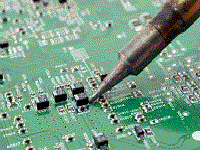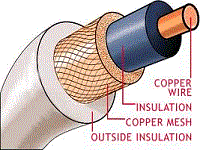Semiconductor Photodiodes
Semiconductor photodiodes generate a current when they absorb photons (light). The amount of current generated depends on the following factors:
· The wavelengths of the incident light and the responsivity of the photodiode at those wavelengths
· The size of the photodiode active area relative to the fiber core size
· The alignment of the fiber and the photodiode
The optical fiber is coupled to semiconductor photodiodes similarly to the way optical sources are coupled to optical fibers. Fiber-to-photodiode coupling involves centering the flat fiber-end face over the photodiode active area. This is normally done directly by butt coupling the fiber up to the photodiodesurface. As long as the photodiode active area is larger than that of the fiber core, fiber-to-detector coupling losses are very low. In some cases a lens may be used to couple the fiber end-face to the detector. However, this is not typically done.
SEMICONDUCTOR MATERIAL AND DEVICE PROPERTIES
The mechanism by which optical detectors convert optical power into electrical current requires knowledge of semiconductor material and device properties. As stated in the last section, providing a complete description of these properties is beyond the scope of this tutorial. In this section we only discuss thegeneral properties of semiconductor PINs and APDs.
Semiconductor detectors are designed so that optical energy (photons) incident on the detector active area produces a current. This current is called a photocurrent. The particular properties of the semiconductor are determined by the materials used and the layering of the materials within the device.Silicon (Si), gallium arsenide (GaAs), germanium (Ge), and indium phosphide (InP) are the most common semiconductor materials used in optical detectors. In some cases aluminum (Al) and indium (In) are used as dopants in the base semiconductor material.
Responsivity
Responsivity is the ratio of the optical detector's output photocurrent in amperes to the incident optical power in watts. The responsivity of a detector is a function of the wavelength of the incident light and the efficiency of the device in responding to that wavelength. For a particular material, only photons of certain wavelengths will generate a photocurrent when they are absorbed.
Additionally, the detector material absorbs some wavelengths better than others. These two properties cause the wavelength dependence in the detector responsivity. Responsivity is a useful parameter for characterizing detector performance because it relates the photocurrent generated to the incident optical power.
Examples of semiconductor photodiodes.
(back)
(next)
(return to optical detectors page)
Become a loyal member to our site. It's free!
Site Search


Translate your page
If English is not your first language you can Translate the text on this page to any one of the languages found in the drop down menu. Select your language from the list for an instant translation.
Looking for something unique for your project? Choose from the drop down menu for quick access to the item you seek.
Related Pages
Become an Electronics Technician
Convert most anything with this utility
Find your wire and cable here!
Sponsored Sites


If you like this site please pay it forward. Donations are welcome.













